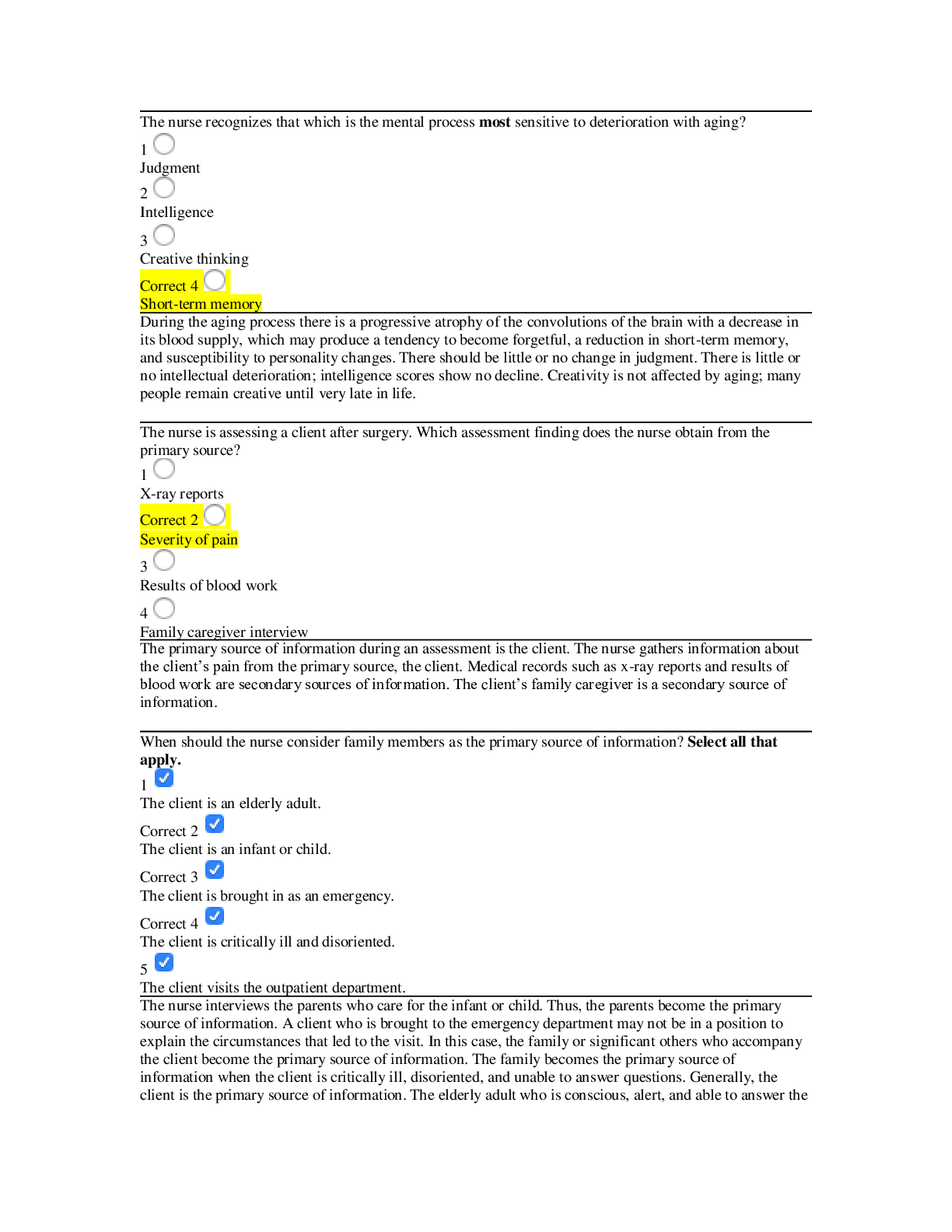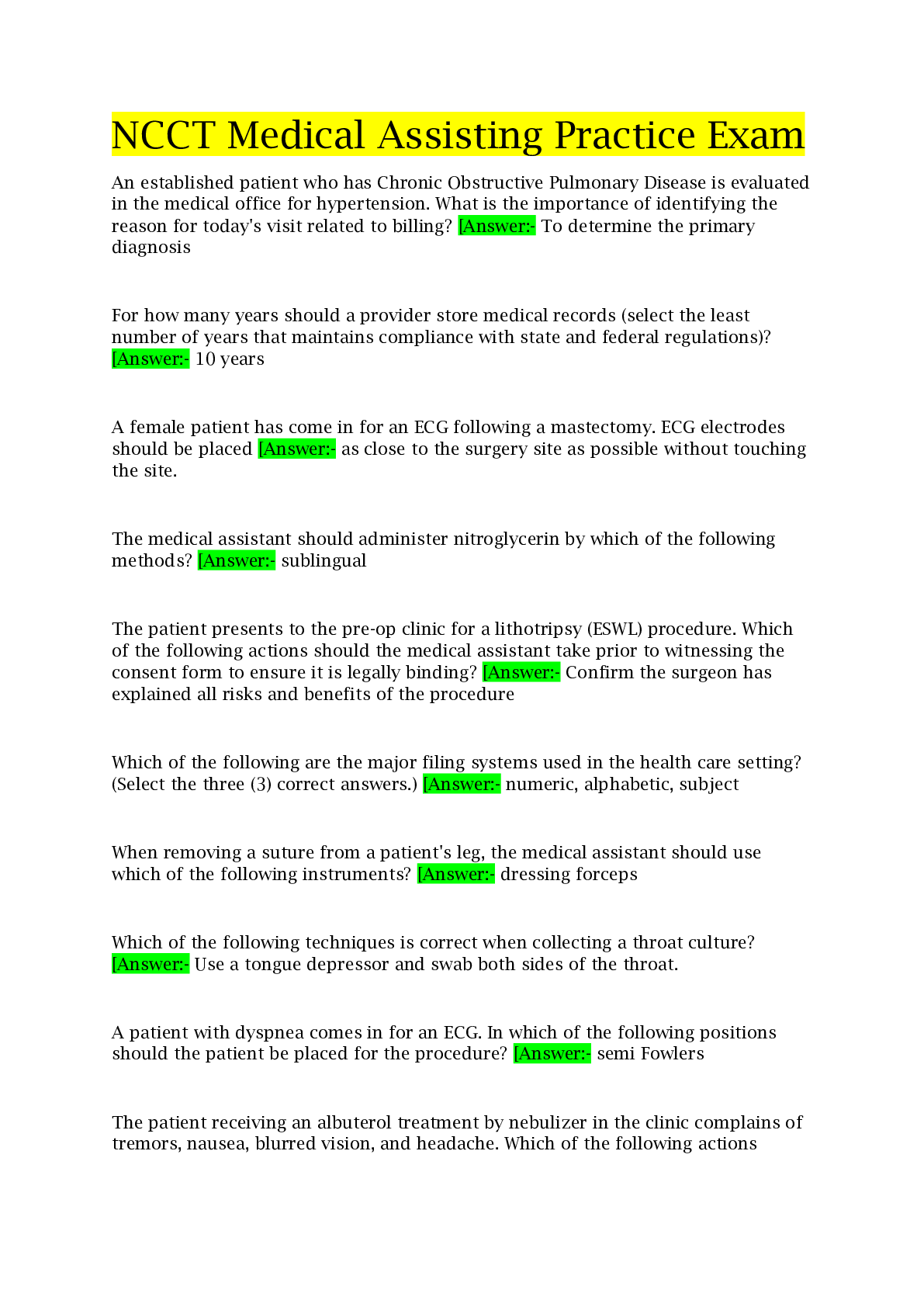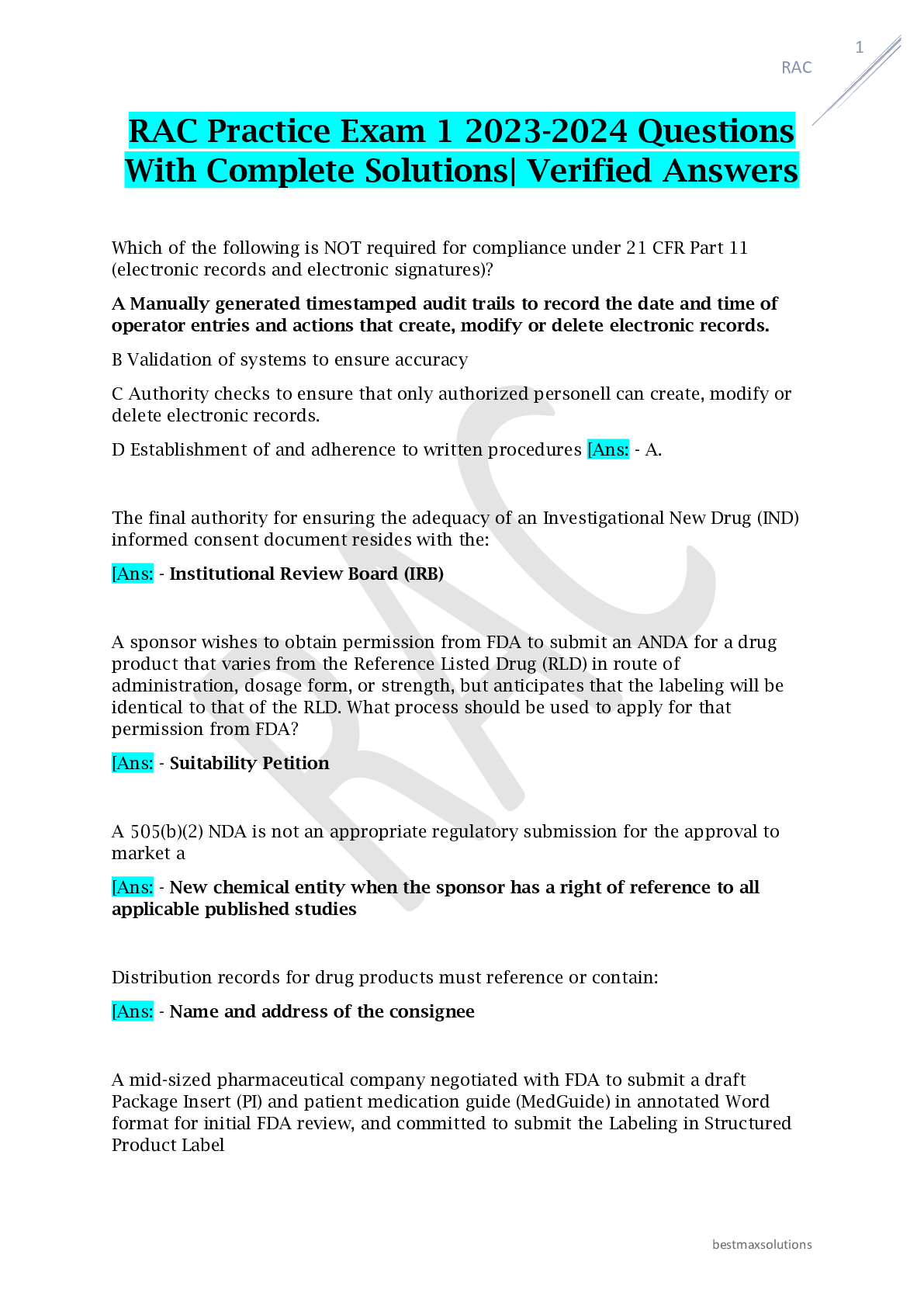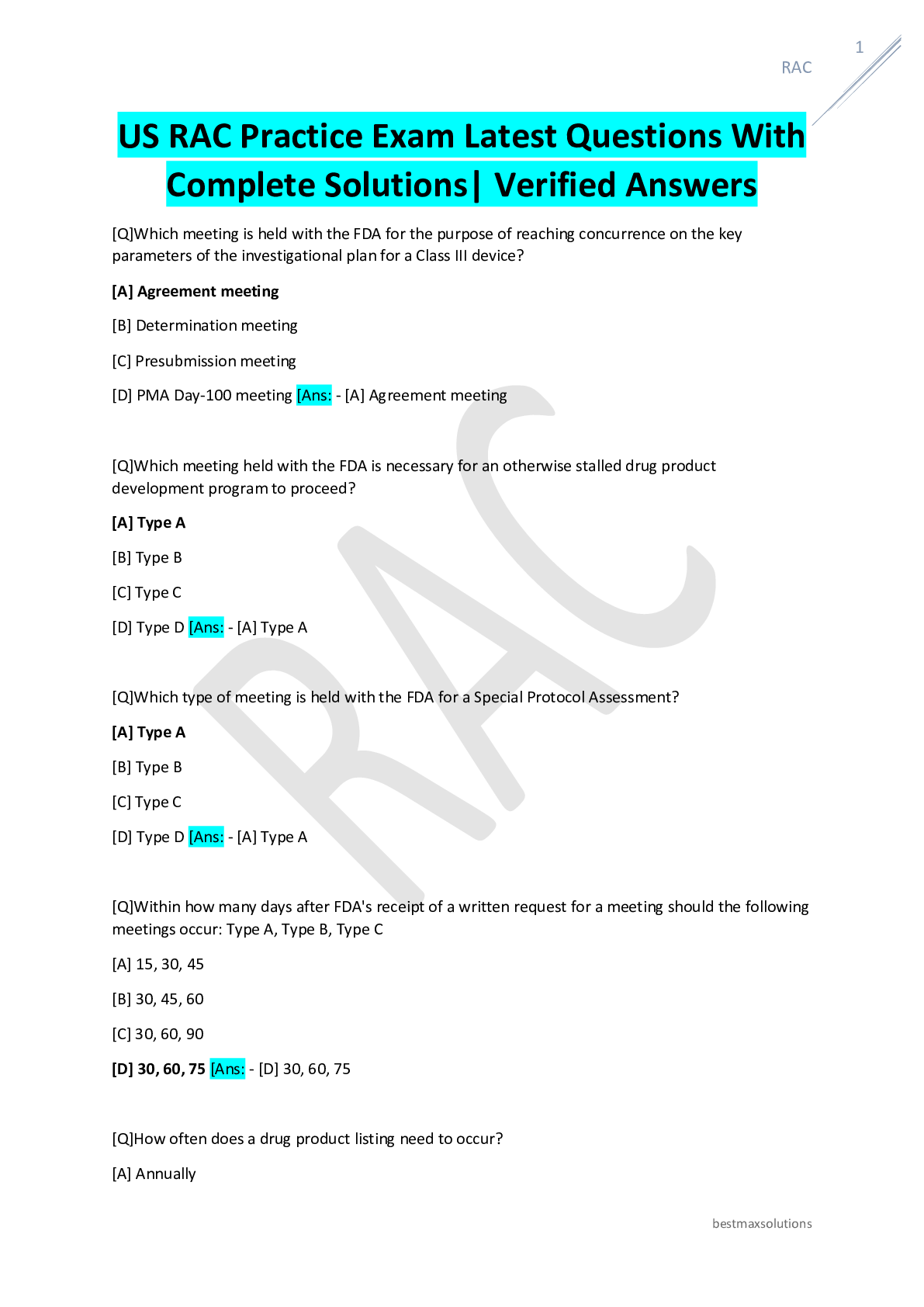healthcare > EXAM > FUNDAMENTALS OF NURSING HEALTH AND PHYSICAL ASSESSMENT HESI |Q-BANK WITH COMPLETE SOLUTIONS| VERIFIE (All)
FUNDAMENTALS OF NURSING HEALTH AND PHYSICAL ASSESSMENT HESI |Q-BANK WITH COMPLETE SOLUTIONS| VERIFIED ANSWERS 2023-2024
Document Content and Description Below
FUNDAMENTALS OF NURSING HEALTH AND PHYSICAL ASSESSMENT HESI The nurse recognizes that which is the mental process most sensitive to deterioration with aging? 1 Judgment 2 Intelligence 3 ... Creative thinking Correct 4 Short-term memory During the aging process there is a progressive atrophy of the convolutions of the brain with a decrease in its blood supply, which may produce a tendency to become forgetful, a reduction in short-term memory, and susceptibility to personality changes. There should be little or no change in judgment. There is little or no intellectual deterioration; intelligence scores show no decline. Creativity is not affected by aging; many people remain creative until very late in life. The nurse is assessing a client after surgery. Which assessment finding does the nurse obtain from the primary source? 1 X-ray reports Correct 2 Severity of pain 3 Results of blood work 4 Family caregiver interview The primary source of information during an assessment is the client. The nurse gathers information about the client’s pain from the primary source, the client. Medical records such as x-ray reports and results of blood work are secondary sources of information. The client’s family caregiver is a secondary source of information. When should the nurse consider family members as the primary source of information? Select all that apply. 1 The client is an elderly adult. Correct 2 The client is an infant or child. Correct 3 The client is brought in as an emergency. Correct 4 The client is critically ill and disoriented. 5 The client visits the outpatient department. The nurse interviews the parents who care for the infant or child. Thus, the parents become the primary source of information. A client who is brought to the emergency department may not be in a position to explain the circumstances that led to the visit. In this case, the family or significant others who accompany the client become the primary source of information. The family becomes the primary source of information when the client is critically ill, disoriented, and unable to answer questions. Generally, the client is the primary source of information. The elderly adult who is conscious, alert, and able to answer the nurse’s questions is the primary source of information. The client who visits the outpatient department is capable of providing accurate answers to the nurse’s questions. This client is the primary source of information during assessment. [Show More]
Last updated: 7 months ago
Preview 1 out of 62 pages

Reviews( 0 )
Document information
Connected school, study & course
About the document
Uploaded On
Sep 19, 2023
Number of pages
62
Written in
Additional information
This document has been written for:
Uploaded
Sep 19, 2023
Downloads
0
Views
120

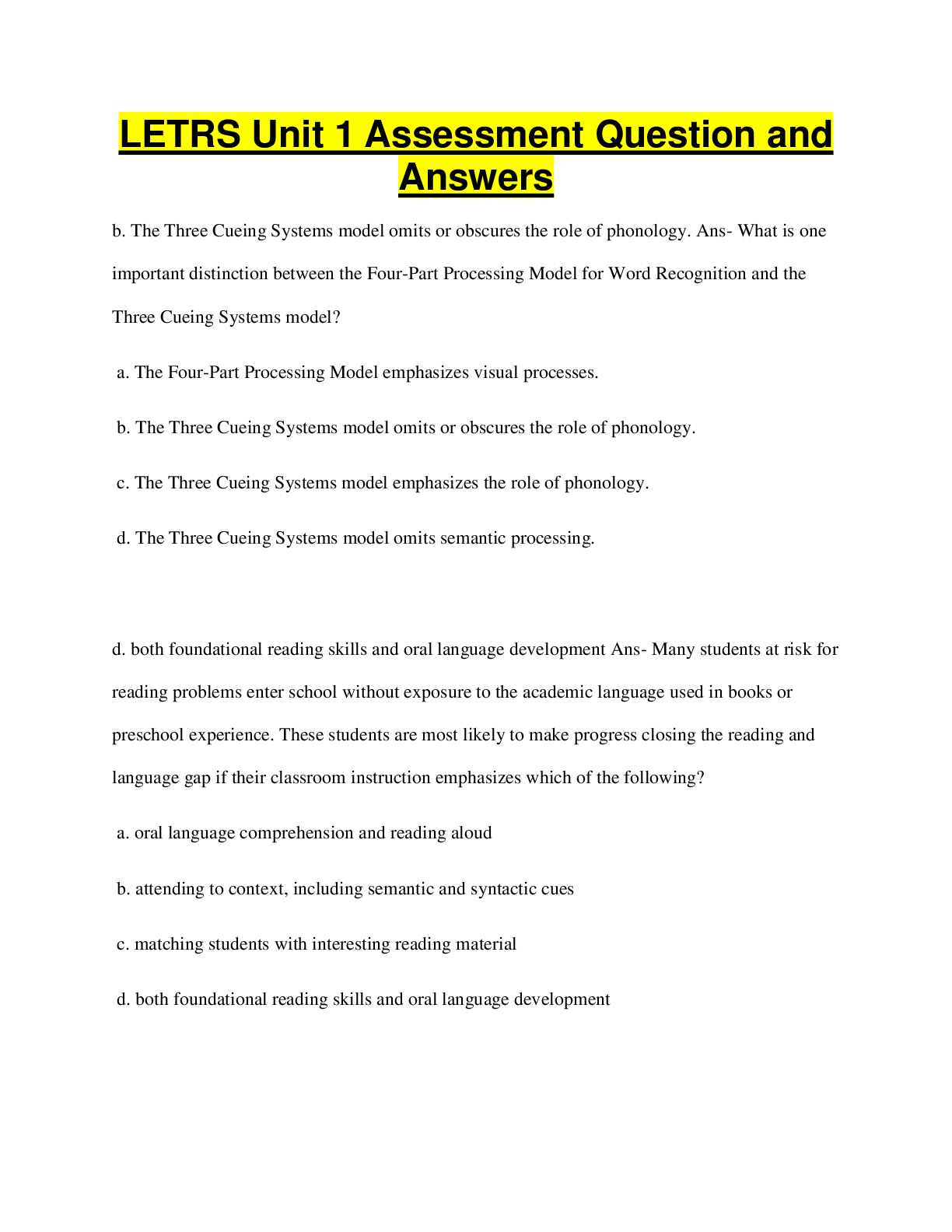

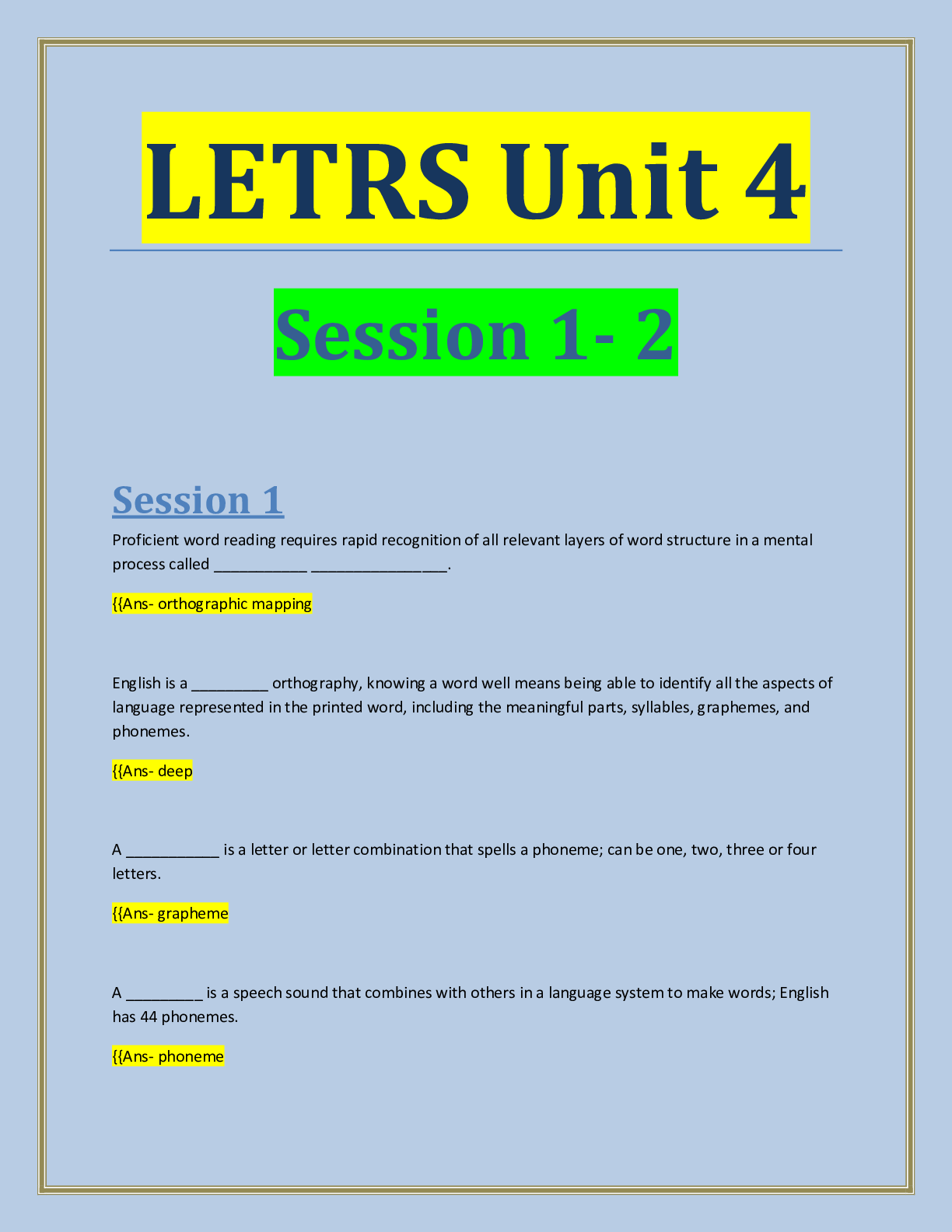
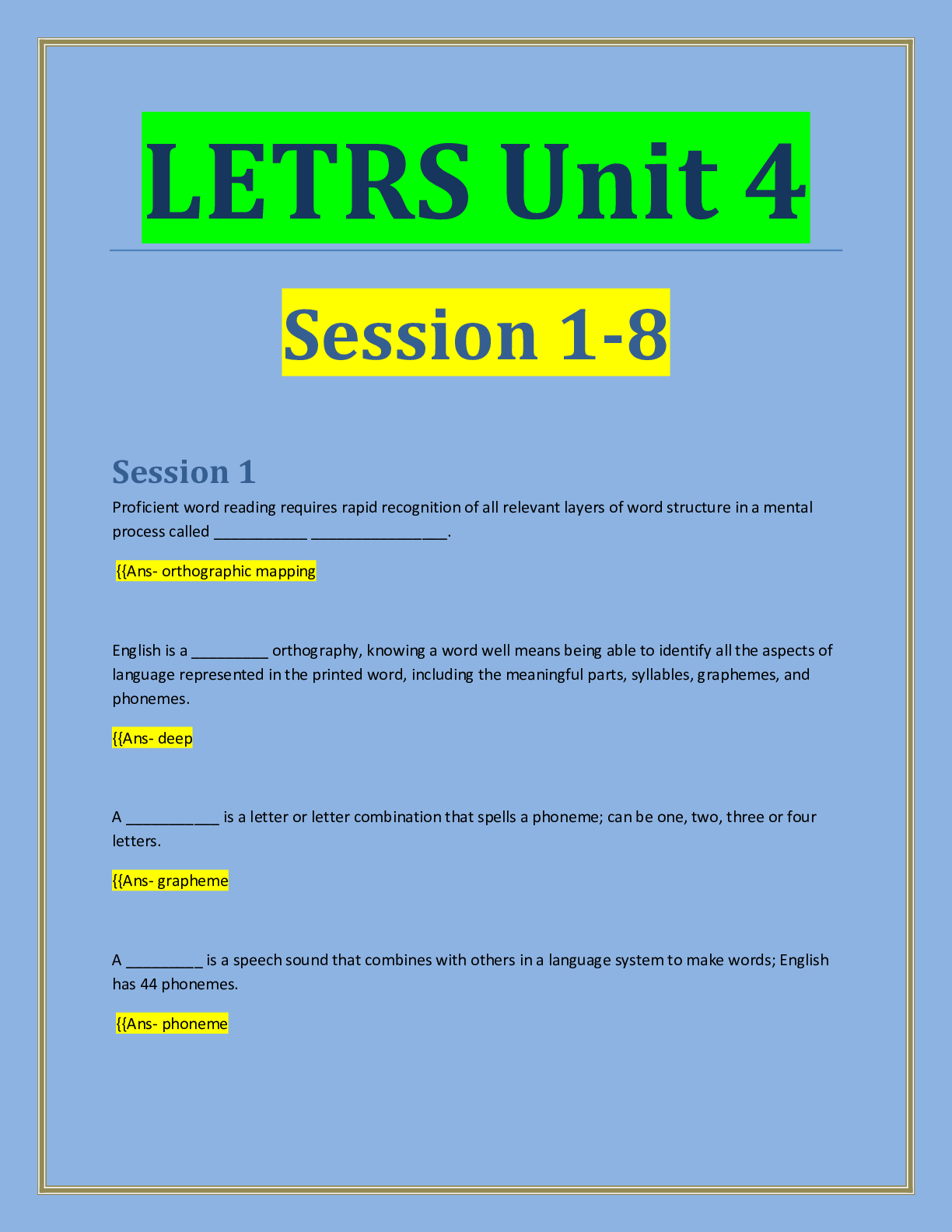

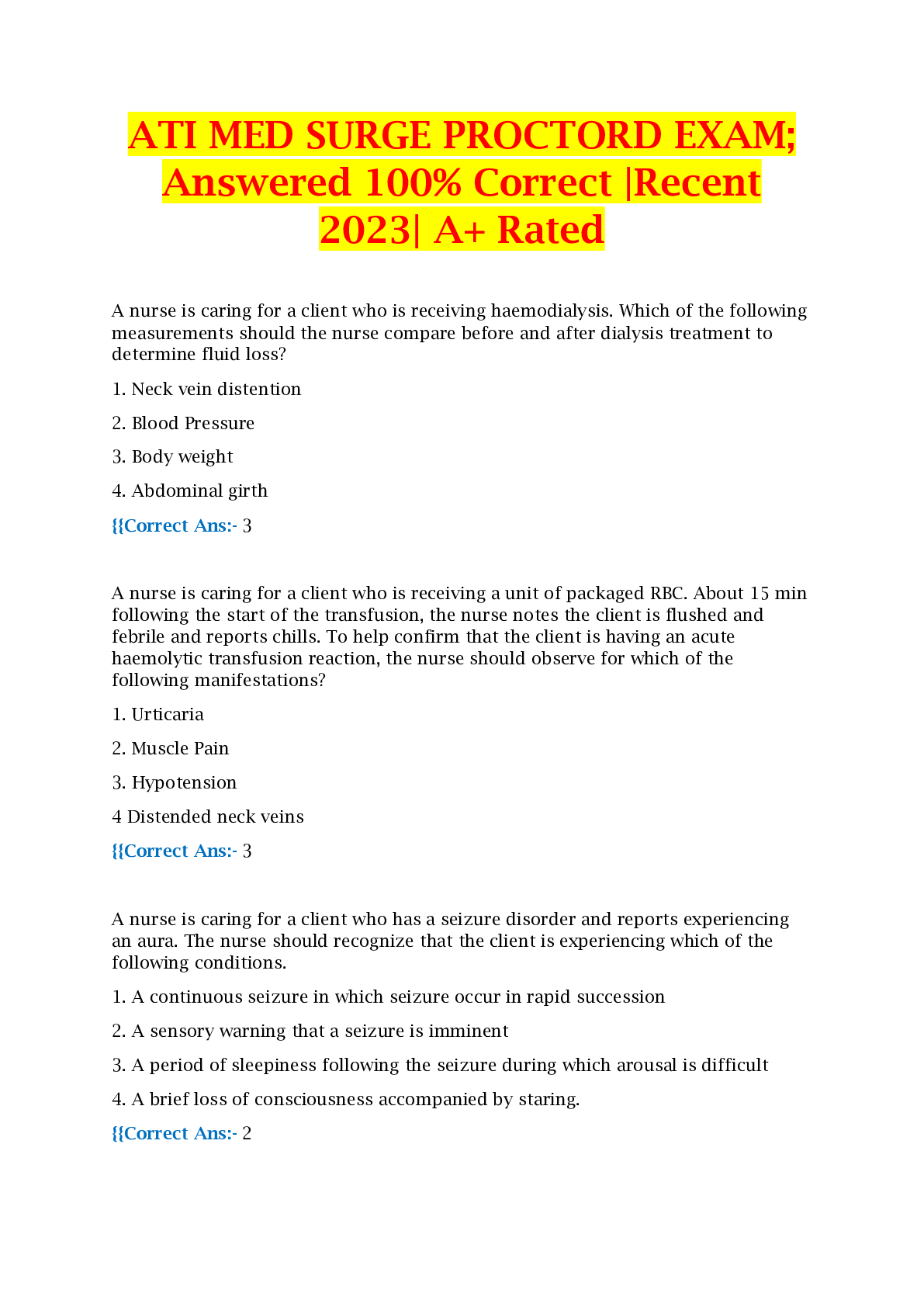


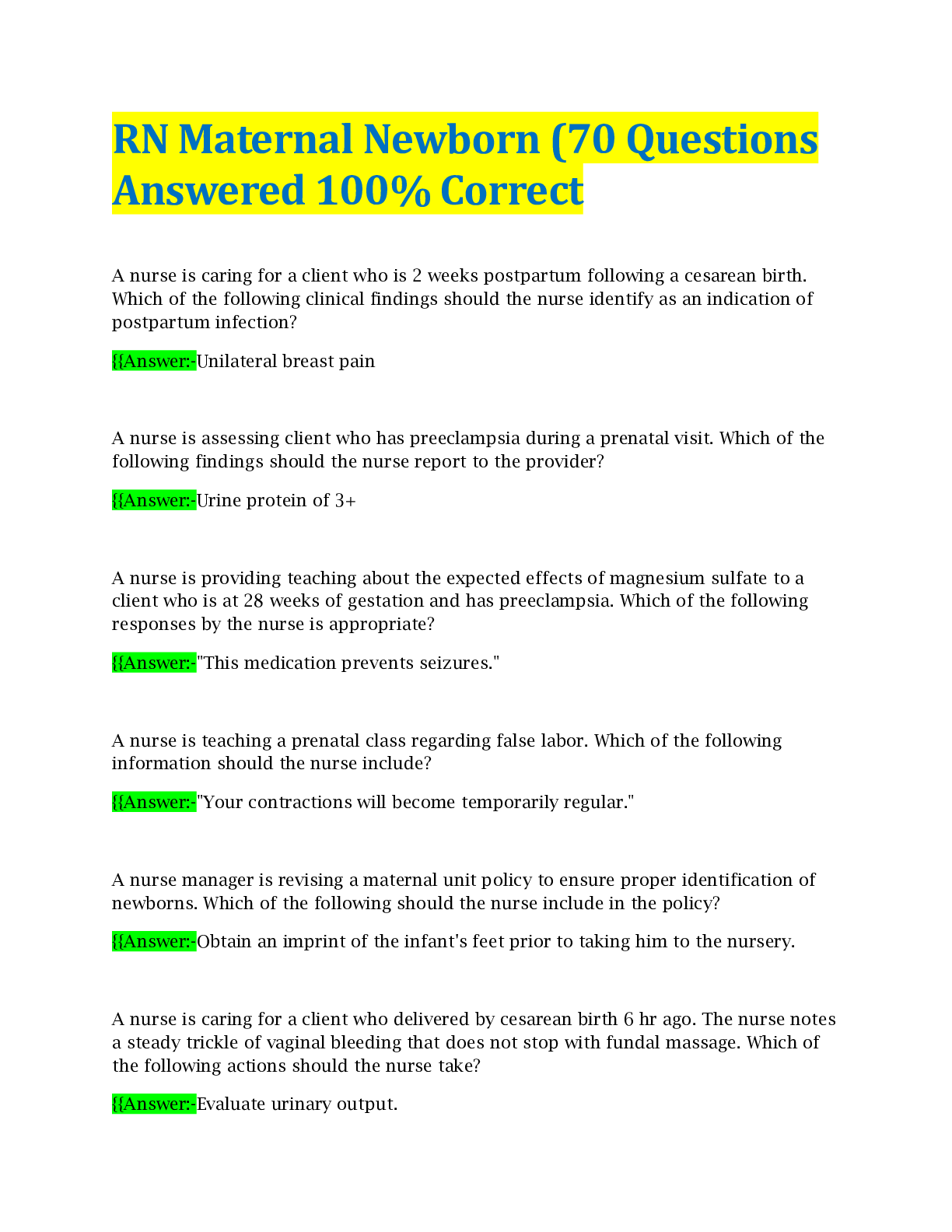
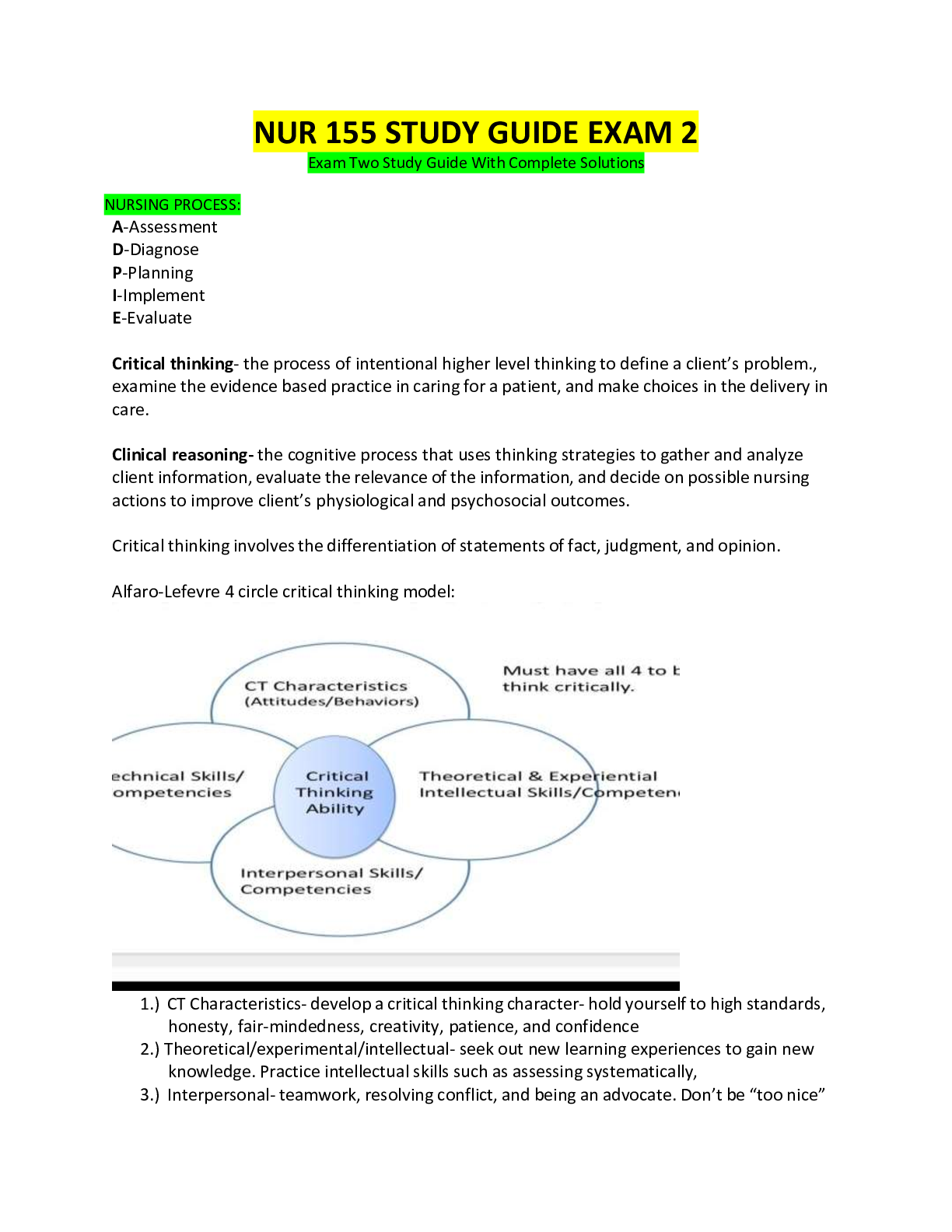
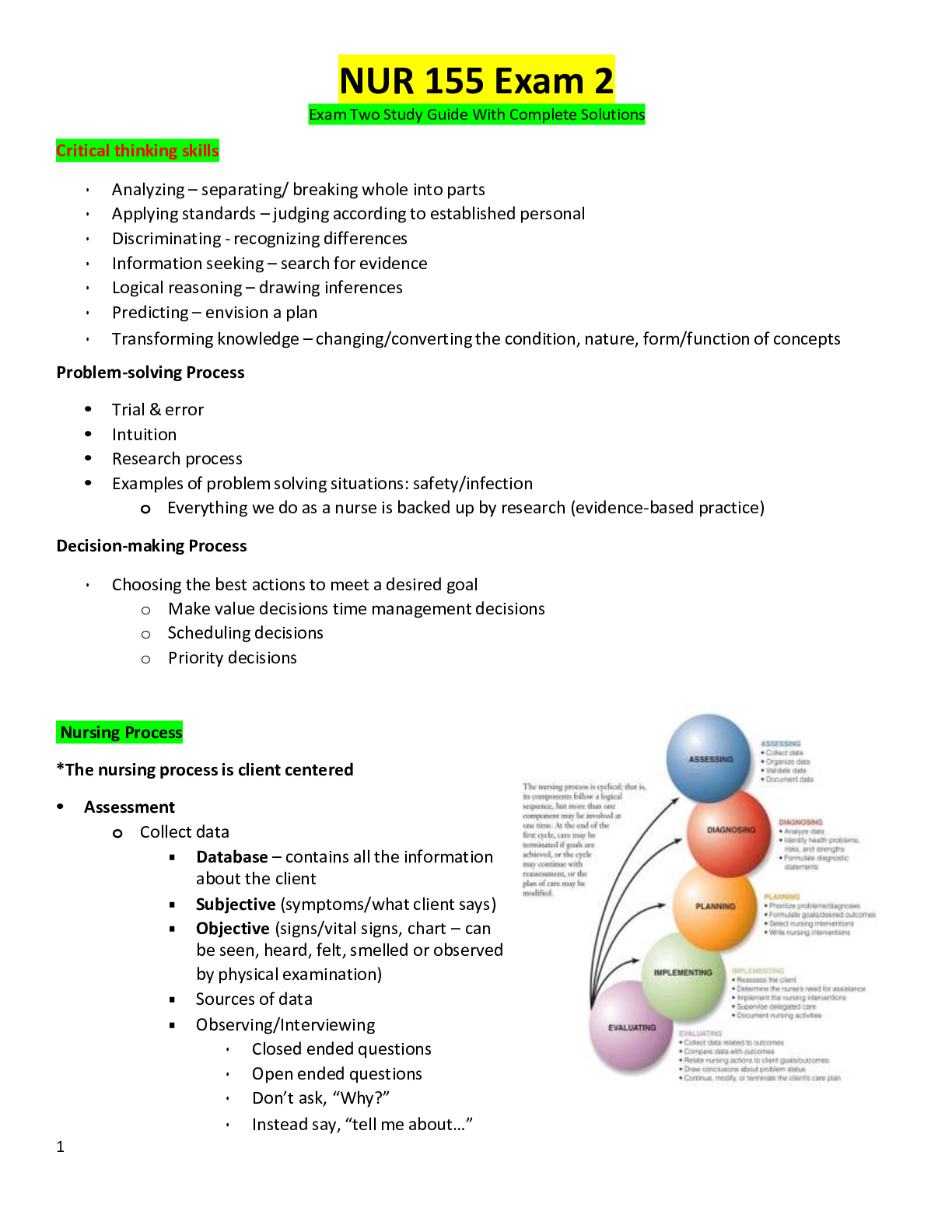
 RN HESI EXIT EXAM VERSIONS TEST BANK.png)





